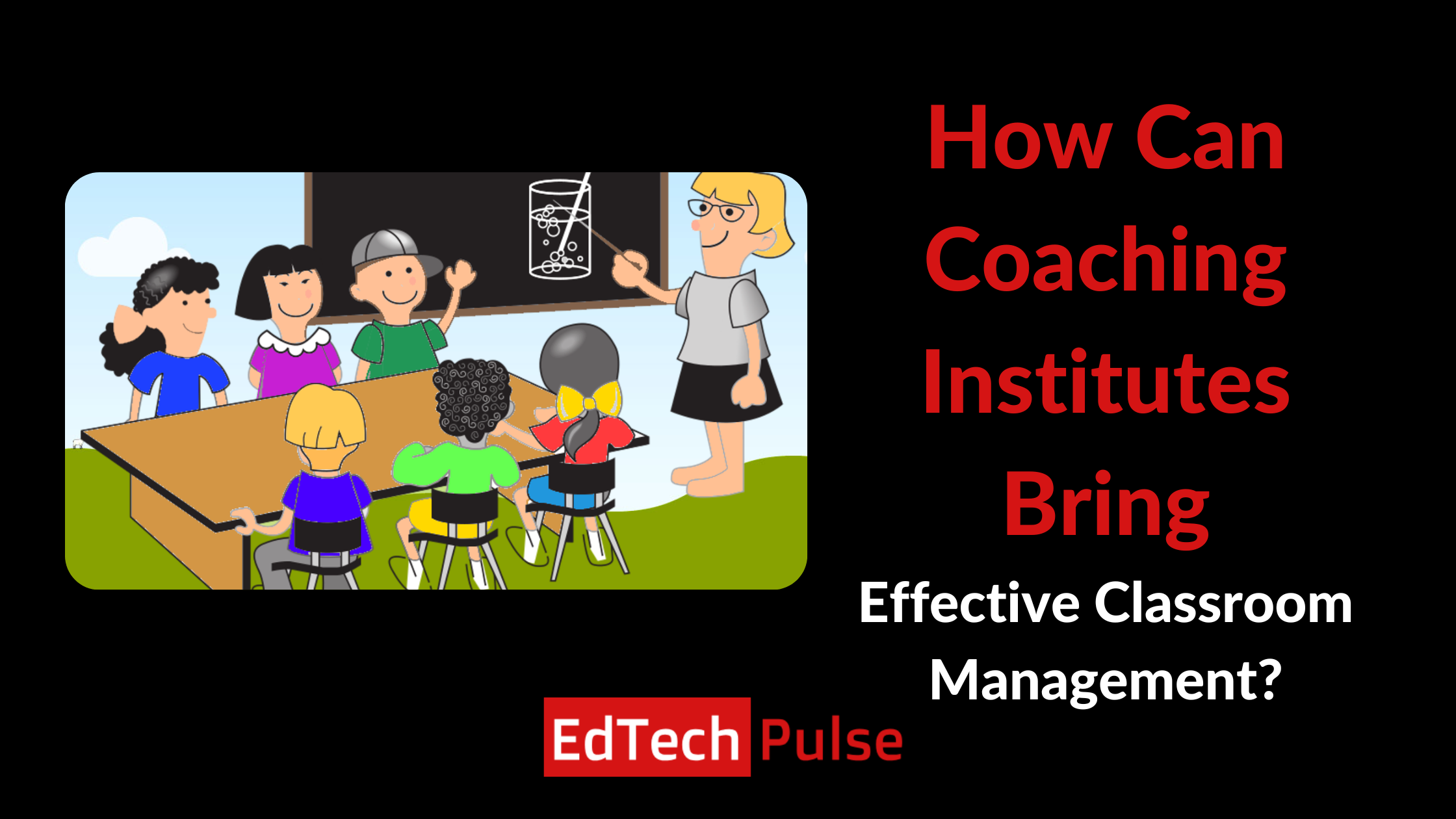How Can Coaching Institutes Bring Effective Classroom Management?
Imagine this: a classroom full of unruly students not paying attention to the lesson. For many coaching institutes, this is an undesirable but typical scene. It hints at the strong correlation between disruptive behavior and poor academic performance. Consequently, the demand for effective management strategies grows as more coaching institutes adopt hybrid and online learning settingsClassroom management strategies can help students behave more appropriately and improve their focus. An efficient technique can create a calm environment and reduce disruptive conduct in the classroom, enhancing the overall growth of students.
But, how can your coaching institute ensure effective classroom management? Well, the following tips can help you create a suitable learning environment.
1. Establish Positive Relationships
When managing a classroom, teachers tend to concentrate on bad behavior. Their priority when dealing with misbehaving students is to reprimand them and tell them what they are doing incorrectly.
But, teachers can benefit by shifting the emphasis to positive encouragement and focusing on the behavior they want to see – rather than what they don't want to see. So, teachers can start on a positive note in the following ways:
- To get to know your students better, schedule one-on-one conversations with them. It can help to avoid conflict if you have to give constructive criticism or deal with unruly behavior in the future.
- Open-ended inquiries, reflective listening, and enthusiastic or interested expressions, especially with shy or introverted individuals, ease class conversations.
- Students become more invested in their studies when given a chance to express their interests. Teachers can stand aside, offer support, and promote student-led activities.
Eventually, focusing more on the good encourages student engagement in the class, increases concentration, and promotes better academic results.
2. Praise Your Students
One of the easiest and most effective strategies for involving and inspiring your students is praise. Performance across the class is increased by 60–70% when teachers praise students at least as frequently as they criticize them. So, praise students for their hard work as it can improve their conduct and academic success. More significantly, it may encourage students to repeat good behavior.
For instance, a student solves a math problem using complex problem-solving techniques. It will help if you praise the student as it can encourage them to keep solving such problems using complex methods.
3. Employ Personalized Learning
Personalized learning can positively affect both classroom behavior and academic performance. This method of classroom management is based on the idea that every student has a unique set of skills. In turn, it is on to coaching institutes to develop these skills.
Build a relationship with your students to learn about their individual learning preferences. Students might be questioned or asked to convey knowledge in writing as one method of doing this. This tactic is effective since you can apply this knowledge to the remaining portions of your course. You can use it to improve your lesson and transform how you teach your students.
4. Utilize Experiential Learning
Experiential learning can engage even the most disruptive students. Moreover, students who are highly involved in their studies feel more engrossed and are more likely to learn things more quickly. Learning by doing necessitates problem-solving and critical thinking, which improves knowledge retention.
Traditional education is more teacher-controlled, where students listen quietly. It also features a set score system with a fixed lesson format. On the other hand, experiential learning is student-centered with an open lesson framework and learning objectives. It urges students to investigate the coursework interestingly and gain knowledge through practical application.
Conducting an open-ended discussion activity is one method of introducing practical instruction. Students can be asked to write the benefits and drawbacks of a chosen topic as part of the current lesson's theme. This way, you can encourage independent thinking and reflection throughout the class.
5. Practice Interdisciplinary Teaching
Interdisciplinary teaching primarily aims to inspire students to link different academic fields. However, diverse learning methods also foster an inclusive and imaginative learning environment. Students explore several perspectives on a subject while working on real-world issues.
Consider the following ways to integrate interdisciplinary teaching:
- Blend math and science with physical education. You can deliver lessons that explain certain physical motions by explaining the concepts and measuring the movements.
- Conduct field study. Bring new learning contexts by building a brief lesson around an outside field study.
- Do news analysis. Encourage students to use skills learned in previous classes to address a problem from a news clip or local newspaper.
- Combine history and creative writing. Each student can assume the character of a historical figure and write to a classmate about events that occurred in their life.
This approach will not only build creative and critical thinking skills but also engage your students, managing the classroom effectively.
Wrapping Up
Relationship building is the first step toward effective classroom management. Moreover, it extends to catering to different learning abilities of students, including customized teaching methods, hands-on learning, and interdisciplinary methods. An engaged lot of students leads to better classroom management.
More problematic behavior in students is related to negative management strategies. It leads to disengaged students and teachers. The methods listed above can produce a favorable and secure learning environment. Additionally, coaching institutes can learn how to organize and offer education in a more practical, powerful, and productive way.
